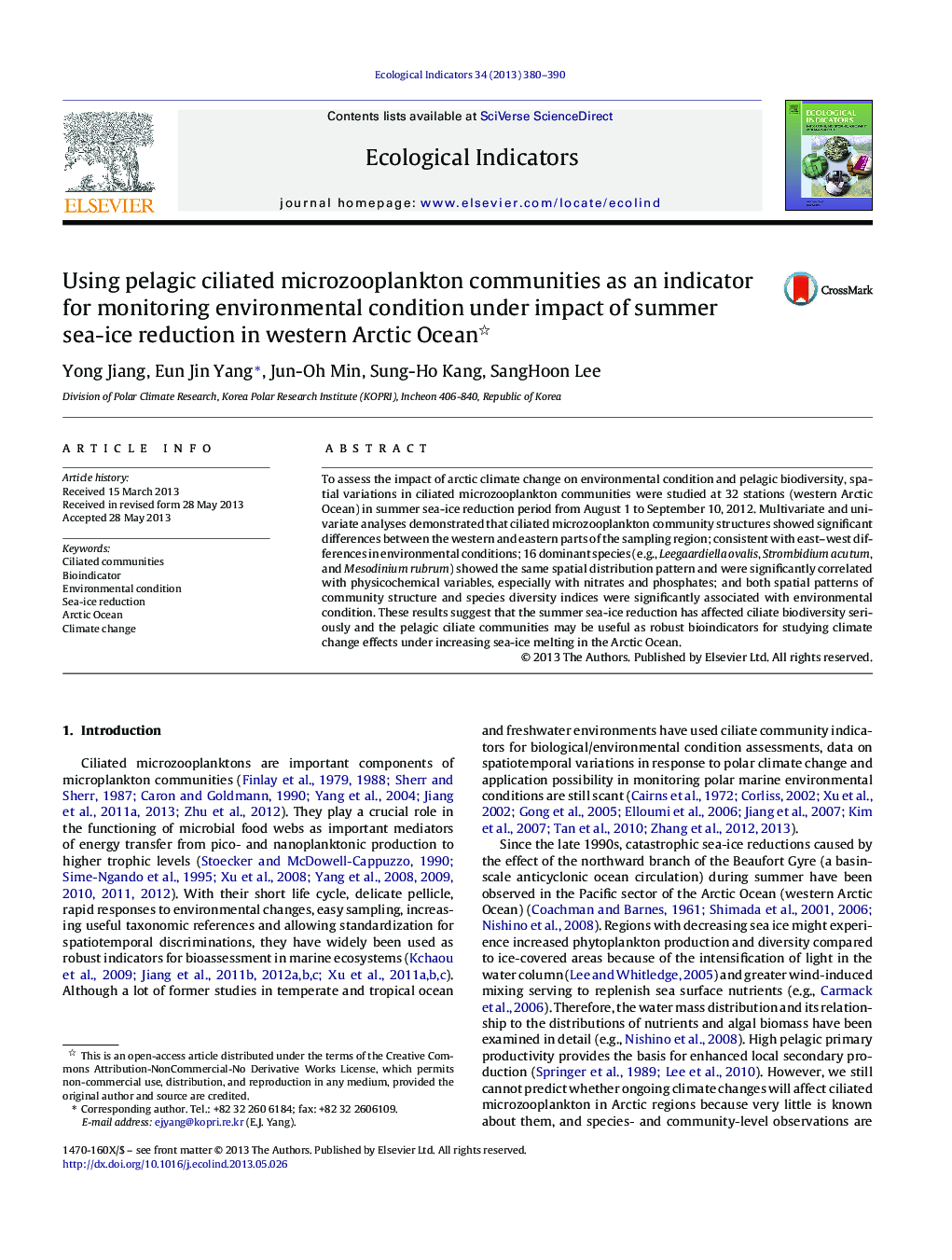| Article ID | Journal | Published Year | Pages | File Type |
|---|---|---|---|---|
| 6295310 | Ecological Indicators | 2013 | 11 Pages |
Abstract
To assess the impact of arctic climate change on environmental condition and pelagic biodiversity, spatial variations in ciliated microzooplankton communities were studied at 32 stations (western Arctic Ocean) in summer sea-ice reduction period from August 1 to September 10, 2012. Multivariate and univariate analyses demonstrated that ciliated microzooplankton community structures showed significant differences between the western and eastern parts of the sampling region; consistent with east-west differences in environmental conditions; 16 dominant species (e.g., Leegaardiella ovalis, Strombidium acutum, and Mesodinium rubrum) showed the same spatial distribution pattern and were significantly correlated with physicochemical variables, especially with nitrates and phosphates; and both spatial patterns of community structure and species diversity indices were significantly associated with environmental condition. These results suggest that the summer sea-ice reduction has affected ciliate biodiversity seriously and the pelagic ciliate communities may be useful as robust bioindicators for studying climate change effects under increasing sea-ice melting in the Arctic Ocean.
Related Topics
Life Sciences
Agricultural and Biological Sciences
Ecology, Evolution, Behavior and Systematics
Authors
Yong Jiang, Eun Jin Yang, Jun-Oh Min, Sung-Ho Kang, SangHoon Lee,
